How has the law been developing on the “violent act” exception to California Labor Code 4660.1(c)(1)?
That’s an issue I had occasion to look at recently as I prepared for a presentation on a panel with defense attorney Jake Jacobsmeyer at the yearly Montarbo Seminar in Sacramento. We spoke at the invitation of Red Bluff based defense attorney Rich Montarbo, whose office sponsors the conference.
Labor Code 4660.1(c)(1) is the section of the 2012 comp reforms which for post 1/1/2013 dates of injury prohibits increased PD ratings for sleep dysfunction, sexual dysfunction or psychiatric disorder arising out of compensable physical injury. The section does not apply to “direct injuries” (as opposed to compensable consequence injury) and does not prohibit PD awards in so called mental-mental injuries. Moreover, the section does not prohibit awards of medical treatment or temporary disability for compensable consequence psyche, sleep or sexual dysfunction injuries.
What LC 4660.1(c)(1) does do, however, is prevent impairment “add-ons” for post 1/1/13 claims. Sleep and sexual dysfunction “add-ons” are not to be rated, though it should be noted that if the sexual impairment is directly caused by the injury, it may be rated under the AMA Guides. That was the situation in Montenegro (see City of Los Angeles v. WCAB) (2016) 81 CCC 611 (prostate surgery for industrial cancer was directly caused by the industrial injury and thus PD for sexual dysfunction was covered).
Labor Code 4660.1(c)(1) has exceptions, however. One is the “catastrophic injury” exception which has really yet to be definitively defined by the WCAB and the courts. There is at least one case I’m aware of that is going up on reconsideration regarding that issue (Maria Martinez v. Vasona Creek Healthcare Center; ADJ9343255) but there is no ruling yet from the WCAB, let alone the Court of Appeal.
A body of law has developed around the other exception, however. That is the “violent act” provision of LC 4660.1(c)(2). That section allows a psychiatric impairment rating for psychiatric compensable consequences (but not for sleep and sex) where the worker was “a victim of a violent act” or had “direct exposure to a significant violent act within the meaning of 3208.3”.
What could best be termed the “leading case” so far is a 2016 WCAB panel decision, Deborah Larsen v. Securitas (81 CCC 770) (Commissioners Newman, Sweeney & Lowe). In Larsen the worker was doing security rounds in a parking lot when she was hit from behind by a car, knocking her to the ground and causing a loss of consciousness. As a result, there were nightmares, a cognitive disorder and a reactive depression.
In Larsen the WCAB panel defines “violent” by using the Black’s Law Dictionary definition:
“1. Of, relating to, or characterized by strong physical force, 2. Resulting from extreme or intense force , 3. Vehemently or passionately threatening .”
Using that definition, the WCAB found that the circumstances qualified as a “violent act” for purposes of the LC 4660.1(c)(2) exception. In doing so they rejected the argument that a victim of a “violent act” must be a victim of a criminal or quasi-criminal act, noting that there are a number of other sections under the California Education Code and California Government Code that use the term acts “perpetrated” on a victim but LC 4660.1(c) does not use such terminology.
Other cases have followed the logic and result in Larsen. They include the following:
•Torres v. Greenbrae (2017 Cal.Wrk.Comp. P.D. LEXIS 230) (tree trimmer was suspended from rope with harness when branch gave way, causing him to fall and hit head and body against tree multiple times as he fell). In Torres there was indication that the psyche disability might be caused directly by events of employment or as a consequence of the physical injury, or as a combination of the two. But in any event, the violent act exception applied.
•Russell Madson V. Michael J. Cavaletto Ranches (2017 Cal.Wrk.Comp.P.D.LEXIS 95) (driver was hauling lemons; truck overturned, pinning him aside down, requiring jaws of life to extricate him)
•Allen v. Carmax (2017 Cal.Wrk. Comp.P.D. LEXIS 303) (Commissioners Razo, Brass, Zalewski) (worker was test driving a reconditioned used-car in Los Angeles when brakes failed, causing him to jump curb and crash into freeway support column; physical injuries caused need for knee surgeries and possible spinal surgery). In this case the WCAB applied the violent act exception despite defendant’s argument that car accidents are so common that they were not intended to come within the exception. The panel also rejected the argument that the injury must stem from a criminal or quasi-criminal act.
•Lopez V. General Wax (2017 Cal.Wrk.Comp.P.D.LEXIS 291) (Commissioners Newman, Brass & Razo) (worker’s index finger was amputated in machine; worker had PTSD and depressive disorder). The panel could not determine whether the psyche impairment was the direct result of injury or a compensable consequence, but it did not matter because it came within the violent act exception.
•Guerrero v. Ramcast (2017 Cal.Wrk.Comp. P.D. LEXIS 285) (Commissioners Sweeney, Razo and Lowe) (mechanic lost balance, hit foot controls and thereby caught hand in punch press, amputating several fingers). Defendant argued that only “sudden and extraordinary” events qualify and that the events themselves were not “abnormal force” but just from the ordinary operation of the punch press. Nevertheless, the WCJ and WCAB found the injury came within the violent act exception to LC 4660.1(c)(1).
An example of what was held to miss the “violent act” standard is Zarifi v. Group 1 Automotive (2018 Cal. Wrk.Comp.P.D.LEXIS 300). In Zarifi the worker accidentally walked into a glass wall but did not break the glass, had no loss of consciousness and no bleeding. The commissioners agreed with the WCJ that this was not a “violent act”.
With these cases the WCAB has given litigants a pretty good roadmap as to the kinds of situations that will come within the “violent act” exception. As Jake Jacobsmeyer noted at the Montarbo Seminar, however, there is no appellate court determination on the standard so far, so caution is indicated.
And some 7 years after the enactment of SB 863 we still have no answer on what constitutes a “catastrophic injury”, the other exception to LC 4660.1(c)(1).
Stay tuned.
Julius Young
www.boxerlaw.com




